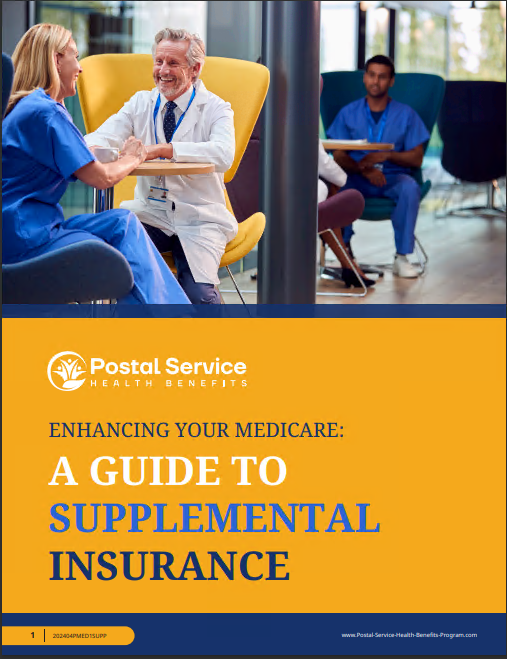Key Takeaways
-
In 2025, the Federal Employees Health Benefits (FEHB) Program no longer applies to USPS employees and retirees. You are now covered under the new Postal Service Health Benefits (PSHB) Program.
-
You must understand new enrollment requirements, how Medicare integration works, and how benefits have changed to make informed healthcare decisions going forward.
The End of FEHB for USPS: What Changed in 2025
The transition is official. As of January 1, 2025, if you’re a United States Postal Service (USPS) employee or retiree, you’re no longer enrolled in the Federal Employees Health Benefits (FEHB) Program. Instead, you’re now part of the Postal Service Health Benefits (PSHB) Program—a new healthcare system specifically designed for the USPS workforce and retiree community.
This shift was mandated under the Postal Service Reform Act of 2022 and has taken full effect in 2025. The change is not optional. If you previously had coverage under FEHB as a USPS employee, retiree, or family member, your plan transitioned to PSHB at the beginning of the year.
Who Is Affected by the Change?
The PSHB Program affects nearly everyone connected to the USPS health insurance structure:
-
Current USPS employees
-
USPS annuitants (retirees)
-
Family members covered under a USPS employee or annuitant
-
Survivors receiving annuitant benefits
If you’re a federal employee who is not part of the USPS, you remain in the FEHB Program. The PSHB is exclusive to postal workers and their eligible dependents.
Understanding the New PSHB Program
The PSHB Program is administered by the Office of Personnel Management (OPM), just like FEHB. However, it operates as a distinct risk pool, meaning it has its own premiums, benefits structure, and cost-sharing rules.
Key Features of PSHB:
-
Separate from FEHB, even though it’s also overseen by OPM
-
Designed specifically for USPS employees, retirees, and dependents
-
Includes integration with Medicare for eligible individuals
-
Offers comparable plan options but under a different pricing and enrollment system
This setup allows the USPS to manage its healthcare costs more effectively while aiming to maintain quality coverage.
Enrollment and Transition Process
If you were already enrolled in an FEHB plan through the USPS as of late 2024, you were automatically transitioned to a corresponding PSHB plan on January 1, 2025. OPM selected the closest available equivalent within the PSHB Program to ensure continuity of care.
2024 Enrollment Periods:
-
Special Enrollment Period for Medicare Part B: Ran from April 1 to September 30, 2024.
-
PSHB Open Season: Ran from November 11 to December 9, 2024. This was your opportunity to review and change your PSHB plan.
Moving forward, you’ll continue to use annual Open Season periods to make changes, similar to how FEHB operated.
Medicare Part B Requirement: What You Need to Know
One of the biggest changes with PSHB is the Medicare Part B requirement for certain annuitants and family members. This integration is designed to reduce overall costs and improve coordination of benefits.
Who Must Enroll in Medicare Part B?
You are required to enroll in Medicare Part B if:
-
You’re a USPS annuitant or family member
-
You’re entitled to Medicare Part A
-
You turned 65 before or during 2024, unless an exception applies
Exemptions:
Some individuals are exempt from the Medicare Part B requirement:
-
Annuitants who retired on or before January 1, 2025
-
Active USPS employees aged 64 or older as of January 1, 2025
-
Individuals living abroad with no access to Medicare
-
Veterans who receive medical benefits from the VA
-
Beneficiaries of Indian Health Services
Failing to enroll in Medicare Part B when required can lead to a loss of benefits under your PSHB plan, especially regarding prescription drug coverage.
Prescription Drug Coverage and Medicare Part D Integration
Starting in 2025, your PSHB plan includes prescription drug coverage through a Medicare Part D Employer Group Waiver Plan (EGWP) if you’re Medicare-eligible. This setup brings a few major changes:
-
$2,000 Annual Out-of-Pocket Cap: Once you spend $2,000 on covered drugs, you pay nothing for the rest of the year.
-
$35 Monthly Insulin Cap: Insulin costs are now capped for greater affordability.
-
Wider Pharmacy Network: You can access a larger network of pharmacies than many FEHB plans previously allowed.
If you opt out of Medicare Part D through the PSHB EGWP, you forfeit your prescription drug benefits under PSHB. Re-enrollment opportunities will be limited.
General Cost Structure in PSHB
Costs under PSHB are structured similarly to FEHB in terms of categories—premiums, deductibles, copayments, and coinsurance—but the dollar amounts and rules have shifted.
Premium Contributions:
-
The federal government continues to pay approximately 70% of the total premium cost.
-
The remaining share is paid by you, the enrollee.
Deductibles and Copayments:
-
Deductibles: In-network deductibles range between $350 and $500 for low-deductible plans, and $1,500 to $2,000 for high-deductible options.
-
Primary Care Visits: Typically involve a copayment of $20 to $40.
-
Specialist Visits: Usually range from $30 to $60.
-
Urgent and Emergency Care: Urgent care visits cost $50 to $75, and emergency room visits run between $100 and $150.
Out-of-Pocket Maximums:
-
Self Only: $7,500
-
Self Plus One and Self & Family: $15,000
These figures apply to in-network care. Out-of-network services generally have higher out-of-pocket limits.
How This Impacts Federal Dental and Vision Coverage
The PSHB Program does not affect your eligibility for other federal benefits like:
-
FEDVIP (Federal Employees Dental and Vision Insurance Program): You can still enroll in dental and vision plans through the existing FEDVIP system.
-
FEGLI (Federal Employees’ Group Life Insurance) and FLTCIP (Long-Term Care Insurance): These remain unchanged.
You can continue managing these benefits through your normal federal benefits portals.
Enrollment Portals: Where to Make Changes
To manage your PSHB coverage, you need to know where to go based on your status:
-
Active USPS Employees: Use the LiteBlue portal to enroll, make changes, or view your plan.
-
USPS Annuitants (Retirees): Use the KeepingPosted.org website for enrollment updates, forms, and plan details.
During Open Season periods, both platforms will have updated tools and instructions for selecting or changing your PSHB plan.
Common Questions About the PSHB Transition
Is My Coverage Still Through OPM?
Yes. OPM still administers the PSHB Program, but it is completely separate from FEHB.
Can I Go Back to FEHB?
No. Once transitioned to PSHB, you cannot rejoin FEHB unless you become employed in another federal agency that still uses the FEHB Program.
Will I Lose My Current Doctor?
Not necessarily. While plan networks may have changed, many providers are still included. You should confirm directly with your PSHB plan.
Do I Need to Take Any Action Now?
If your coverage transitioned automatically and you don’t need to make any changes, no action is required outside of Open Season. However, always review your plan annually.
Why Staying Informed Is Crucial
This shift to PSHB marks a major change in how USPS employees and retirees access healthcare. If you don’t stay informed, you risk losing out on valuable benefits, or worse, having gaps in your coverage.
-
Always review your Annual Notice of Change (ANOC)
-
Pay close attention to Open Season windows
-
Understand your Medicare obligations, especially regarding Part B and Part D
This isn’t a one-time adjustment—it’s an ongoing system that will evolve over time.
Stay Ahead in 2025 and Beyond
The end of FEHB for USPS means you need to be more proactive about your healthcare coverage. With new timelines, Medicare requirements, and plan structures, taking a passive approach could cost you both financially and medically.
If you’re unsure about what steps to take, or how the PSHB transition impacts your personal situation, speak with a licensed agent listed on this website for personalized, professional guidance.






